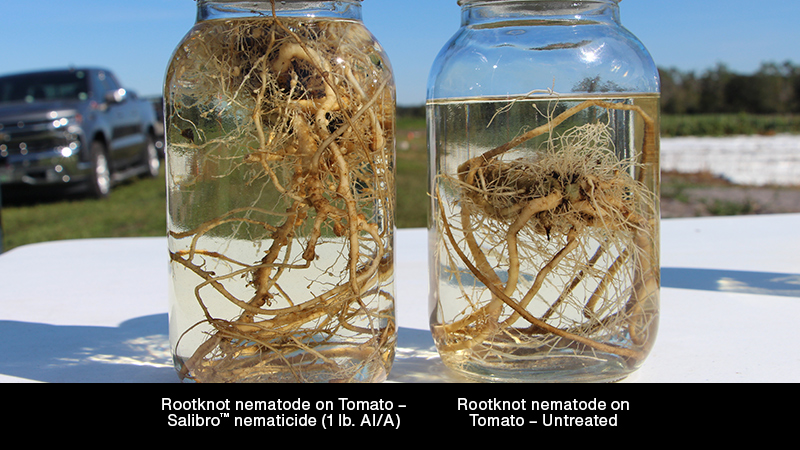Ways To Better Understand Irrigation Woes in Your Pistachio Crops
It is a good doctor who cures the disease, but a great doctor who cures the cause. In her mission to prevent clogged irrigation systems in the orchard, Mae Culumber’s prescription starts with a detailed water report and analysis.
Culumber, a Nut Crops Farm Advisor with the University of California’s Cooperative Extension in Fresno County, encourages growers — especially new ones — to continuously document to better evaluate the tendency of their irrigation water to clog. Ensuing salinity hazards can be assessed in the process.
“If you’re at the beginning stages of planning an orchard, it can be very valuable information to make sure that you do a good evaluation of the quality of your water before starting,” Culumber said at UC’s annual Pistachio Day. “This can really help with making some design decisions with your irrigation system.”
Water quality — involving both surface water and groundwater — is a significant concern in the management of irrigation systems. Clogging of emitters by physical particulates, organic contaminants, and chemical precipitates may create a significant problem in the daily maintenance of the system.
UP-FRONT CONSIDERATIONS
Surface water and groundwater have similarities and differences. Both contain particulate and organic matter; however, while surface water is generally low in salts, groundwater can be high. These factors will influence the analysis of all water samples.
“Generally speaking, organic material is most often associated with surface water, but we do find it in groundwater,” Culumber says. “Surface water is generally low in salts, which is good for using in the production of the pistachio and also for leaching.”
When proceeding with a sampling and analyses of water, Culumber’s recommendations include:
- With groundwater, run the pump at least 15 minutes before collecting a sample.
- Collect at least a liter of groundwater in a clean container.
- Collect the sample close to the well, although if troubleshooting is involved, growers should consider collecting after the filters and at the end of the lines.
- With surface water, a sample of more than a liter may be necessary, possibly as much as a gallon.
In either case, the sample should be stored in a cooler or a refrigerator and delivered to a lab as soon as possible.
“A hot pickup truck should be avoided for storing your samples because a lot of volatile and biological contaminants can change rapidly with time and high temperatures,” Culumber says.

“It’s important … to understand what the suspended solids are of your irrigation source. Sand is likely going to be your biggest concern.”
— Mae Culumber, University of California’s Cooperative Extension
CONTAMINANT TYPES
Suspended particulates include sand, silt, and clay, some of which are small enough to pass through irrigation filters and clog micro-emitters.
“It’s important, especially in the development of your orchard-making decisions in terms of the filtration system and size of your emitters, to understand what the suspended solids are in your irrigation source,” Culumber says. “Sand is likely going to be your biggest concern. That’s why it’s important to do regular inspection and maintenance of your system and make sure things are back-flushing properly.”
Organic contaminants include algae and bacteria. Both provide food for slime organisms. Small particles of either can pass through the filter and into the drip system.
Algae occurs in surface waters and has a green color. Bacteria, which is white, gray, black, or reddish-brown, grows when the water has elevated levels of organic matter (dead algae), calcium carbonate (CaCO3) and bicarbonate (HCO3), iron (Fe), manganese (Mn) or hydrogen sulfide (H2S).
Chemical precipitates include CaCO3, HCO3, Fe, Mn, sulfides, and injected fertilizers. A common problem involves the elevated and oxidized presence of Fe, Culumber says.
“When irrigation water is pumped, it adds oxygen to the system. This can trigger a reaction, where some elements that would normally be very soluble can be changed into an insoluble form,” Culumber says. “That can result in iron precipitation in the water. This iron-rich water becomes a viable food source for bacteria, and you will see this red, or yellow, or tan slime that will accumulate in the drip system.”
Lime precipitation is also troublesome, particularly in California’s Central Valley, where it is naturally occurring as well as exacerbated by calcium amendments.
With regard to chemical precipitates, Culumber warned of injected fertilizers and dissolved fertilizers that can react with water and form precipitates that can clog emitters. Examples include using anhydrous ammonia or calcium (in the form of CAN-17) when bicarbonate levels are higher than 2 mEq/l or the pH is greater than 7.5. This can “really increase” the risk of precipitating CaCO3, she says.
“The best policy is to not mix fertilizers. There is a big push now to where we’re trying to make sure to balance our nutrition, but we want to be careful to try to limit mixing fertilizers,” Culumber says. “If you’re going to mix fertilizers, make sure you do a jar test according to the manufacturer instructions before doing so.”
CLOGGING PREVENTION
To prevent clogging, Culumber says growers should:
• Conduct routine filter cleaning and maintenance to prevent sand particles and biological contaminants from penetrating the system.
• Flush mainlines and submains using flush valves.
• Open later line ends to flush as often as every two weeks.
• Manually flush self-flushing lateral lines periodically.
• Run irrigation for up to an hour after fertilizer injection.
• Regularly inspect the irrigation system; for example, look for leaks and changes in pressure and wetting patterns.
With regard to biological problems, such as iron or manganese precipitation, aeration and settling in ponds and reservoirs should be promoted before the water can reach the irrigation system, Culumber says. Chlorine can be used to precipitate and filter out those contaminants, she adds, and inhibitors and chelation products can also be useful, although they must be used before the iron is oxidized within the system.
Elevated carbonate precipitates require pH control, so both treatment options may be necessary for a system, Culumber says, although growers should never directly mix acid and chlorine, she warns. “That can be very dangerous. If using at the same time, you should designate two separate injection points at least 10 feet apart and make sure to inject acid before chlorine.”
SALINITY, NITROGEN ISSUES
Several of the chemical parameters that are used to monitor for clogging potential are also important indicators of salinity issues. Salinity, Culumber says, is defined as being the concentrations of dissolved salts in the irrigation water or soil. Some salts are bonded together by opposing charges, but with irrigation water these bonds are many times broken, meaning the salts exist individually as positively charged cations or negatively charged anions.
Growers should pay particular attention to the potential for osmotic stress and ion toxicity. Electrical conductivity (EC), included in a water analysis, provides an overall measure of the levels of salts in water. Declines in tree vigor and yield have been observed when EC levels exceed 4.5 to 6 dS/m. Elevated pH levels >7.5 may indicate nutrient availability is a problem. The level of sodium may be a sign of sodic-induced infiltration problems. Careful consideration of irrigation water characteristics is necessary to choose the proper amendments and respective rates to treat irrigation water and reclaim the soil.
Meanwhile, elevated levels of nitrates-nitrogen (NO3-N) can lead to defoliation and too much vigor in the regrowth of pistachio trees, Culumber says.
“What can appear to be low levels as we apply irrigation water through the season can result in considerable levels in terms of the pounds per acre of nitrogen that we are applying,” she says.










